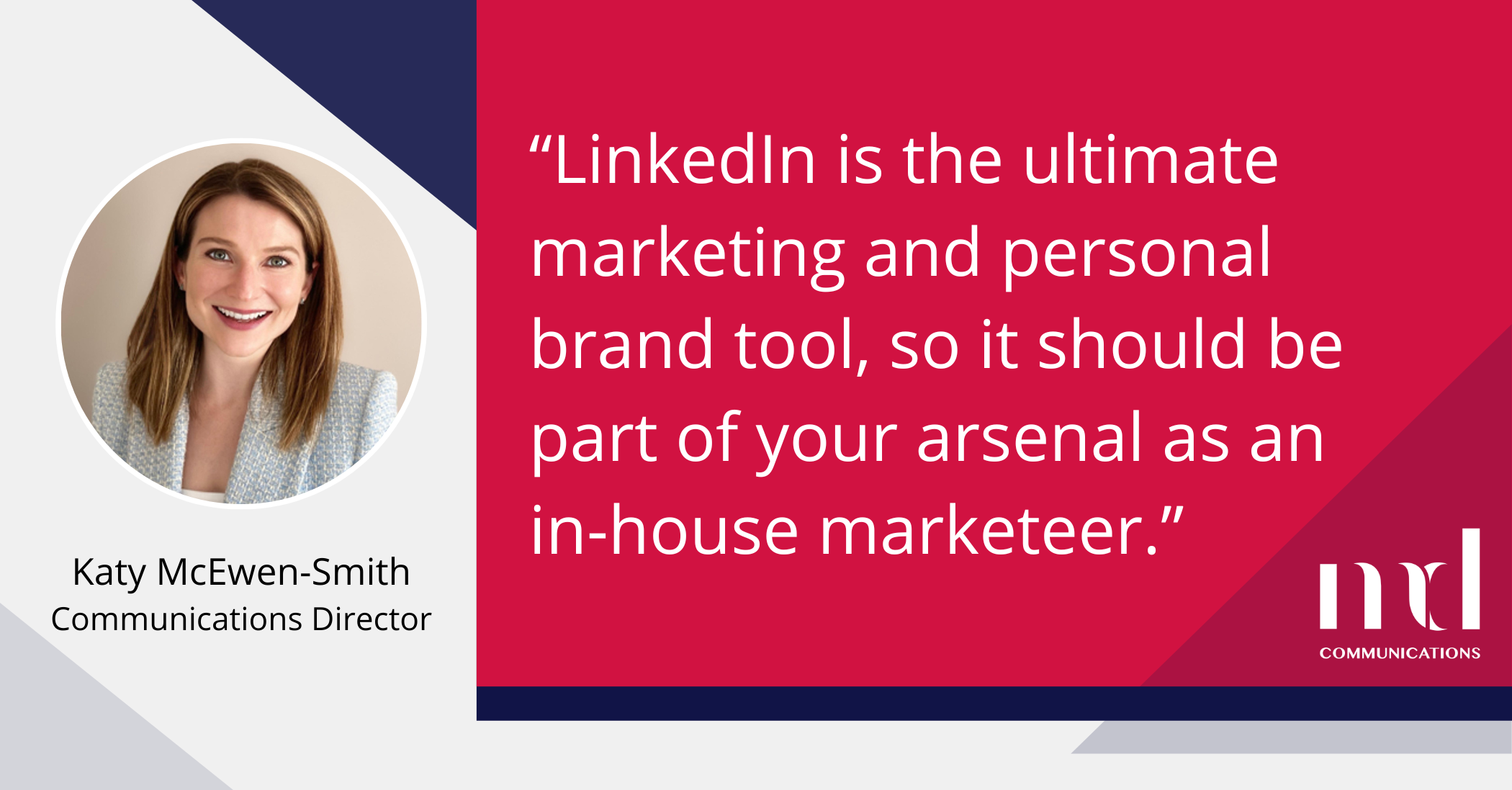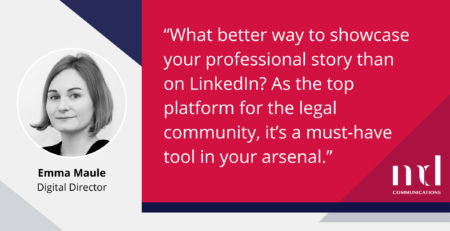Communications Director Katy McEwen-Smith explains how in-house teams can support their lawyers on social media.
LinkedIn is the ultimate marketing and personal brand tool, so it should be part of your arsenal as an in-house marketeer.
However, your firm’s lawyers are key to this – what they post on their personal profiles will be seen by a far wider audience. So, especially in light of new guidance from the regulator, how can you support them to make best use of the platform?
1. Get comfortable with the basics
Firms should be supporting lawyers to ensure their profiles put the right foot forward. Professional headshots in the right resolution, banner images that link the individual to the firm, a properly drafted ‘About’ section and more, gives each individual a chance to stand out for their expertise.
Giving lawyers a toolkit to access the right imagery, the right template and articulate their achievements boosts the likelihood that they’ll feel comfortable using it. Additionally, running regular training sessions or drop-in surgeries for lawyers to help upskill them is a must, to ensure everyone is equipped to use the platform correctly.
2. Establish the parameters
We’re in the legal sector. We all like rules.
By developing guidelines across the firm, everyone can refer to the social media policy on joining to establish some ground rules to protect client relationships and to empower lawyers from the outset. This should include reference to what the profession’s regulators say about social media.
The Bar Standards Board has recently released new guidance around social media for barristers, which our Digital Director Emma Maule commented on in The Times.
The SRA provides guidance on social media and the Law Society has a really useful practice note.
3. Get everyone into the habit of engaging
Habits are powerful things. Start with just five minutes a day to scroll through the platform and start to use it as a reference point for news on peer moves or client updates. Are lawyers following the right people? Is their newsfeed actually giving them useful information?
Supporting them on identifying the right individuals to connect with and groups to join where they’ll find interesting conversations is a concrete starting point.
4. Provide ready-made content
The main account of the firm will be posting things consistently – take advantage of this and make sure that the graphics and articles shared in posts from the main account are being pushed out to lawyers’ own wider networks.
Help individuals build up the habit of sharing the firm’s news with their own take on it, in one or two sentences, to add their own voice to the update.
5. Better understand your colleagues
Following one another on LinkedIn is a great way to also keep up to date on what’s going on in your own firm. What matters to colleagues? Why are they passionate about the work they’ve been doing with clients?
There’ll be those that are already posting regularly about the recent work they’re proud of and why. Listen to these voices to strengthen existing relationships within the firm.
6. Help identify the right hashtags
Provide lawyers and teams with a list of trending hashtags about breaking news stories in each sector so they can effectively contribute to the conversation as it unfolds.
Lawyers equipped with these popular hashtags can use it to guide what they share and guide what they’re commenting on.
7. Reinforce LinkedIn’s value as a networking tool
It’s important to realise you have a willingly captive audience – your clients, colleagues and peers are openly sharing their news.
By congratulating and noting people moving roles to recognising work milestones and achievements, celebrating one another is an important way to sustain the strength of your network and get first-hand industry insights.
8. Foster thought-leadership opportunities
While LinkedIn is a primary platform for sharing thought leadership you’ve written and your own perspectives on emerging developments in your sector, it is also a source of ideas for your next thought leadership piece.
Monitoring what your network is engaging with and commenting on can also help your teams identify areas of expertise they could be helping to shape.
9. Establish a feedback loop
We’ve all published things into the ether and never thought about them again.
However, going to lawyers with data around the posts that gained the most traction (social media management tools such as HootSuite and Sprout Social will provide this data) strengthens the case for keeping the momentum up and getting people more comfortable with sharing on social media.
10. Have fun
Yes, we said it. Have fun. People want to be informed, entertained and inspired.
If you’re enjoying speaking about your passion and area of expertise, you’ll find those fellow souls wanting to know more about what matters to you.
Building your personal brand online is an exercise in defining what matters to you and you can use this as a compass to connect with others who share your passions and expertise.
Empower those at your firm to develop how comfortable they feel on LinkedIn by getting in touch with us today to talk about the training we can offer you and your firm.













